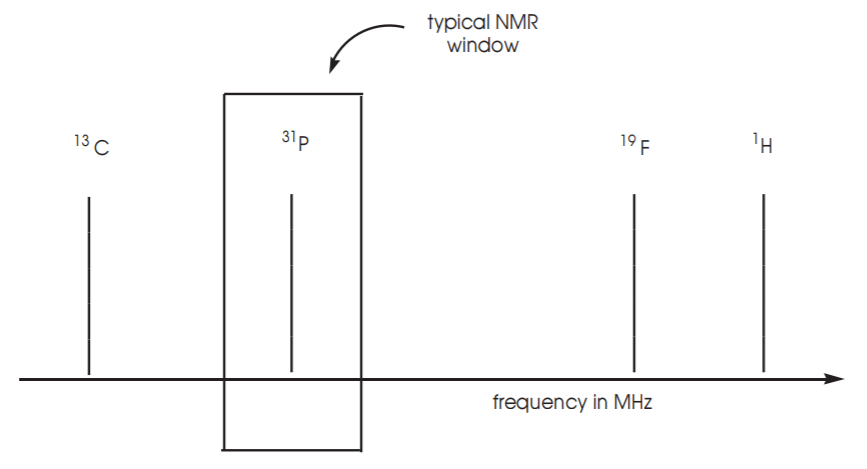23.1: Basic Principles
- Page ID
- 214018
\( \newcommand{\vecs}[1]{\overset { \scriptstyle \rightharpoonup} {\mathbf{#1}} } \)
\( \newcommand{\vecd}[1]{\overset{-\!-\!\rightharpoonup}{\vphantom{a}\smash {#1}}} \)
\( \newcommand{\id}{\mathrm{id}}\) \( \newcommand{\Span}{\mathrm{span}}\)
( \newcommand{\kernel}{\mathrm{null}\,}\) \( \newcommand{\range}{\mathrm{range}\,}\)
\( \newcommand{\RealPart}{\mathrm{Re}}\) \( \newcommand{\ImaginaryPart}{\mathrm{Im}}\)
\( \newcommand{\Argument}{\mathrm{Arg}}\) \( \newcommand{\norm}[1]{\| #1 \|}\)
\( \newcommand{\inner}[2]{\langle #1, #2 \rangle}\)
\( \newcommand{\Span}{\mathrm{span}}\)
\( \newcommand{\id}{\mathrm{id}}\)
\( \newcommand{\Span}{\mathrm{span}}\)
\( \newcommand{\kernel}{\mathrm{null}\,}\)
\( \newcommand{\range}{\mathrm{range}\,}\)
\( \newcommand{\RealPart}{\mathrm{Re}}\)
\( \newcommand{\ImaginaryPart}{\mathrm{Im}}\)
\( \newcommand{\Argument}{\mathrm{Arg}}\)
\( \newcommand{\norm}[1]{\| #1 \|}\)
\( \newcommand{\inner}[2]{\langle #1, #2 \rangle}\)
\( \newcommand{\Span}{\mathrm{span}}\) \( \newcommand{\AA}{\unicode[.8,0]{x212B}}\)
\( \newcommand{\vectorA}[1]{\vec{#1}} % arrow\)
\( \newcommand{\vectorAt}[1]{\vec{\text{#1}}} % arrow\)
\( \newcommand{\vectorB}[1]{\overset { \scriptstyle \rightharpoonup} {\mathbf{#1}} } \)
\( \newcommand{\vectorC}[1]{\textbf{#1}} \)
\( \newcommand{\vectorD}[1]{\overrightarrow{#1}} \)
\( \newcommand{\vectorDt}[1]{\overrightarrow{\text{#1}}} \)
\( \newcommand{\vectE}[1]{\overset{-\!-\!\rightharpoonup}{\vphantom{a}\smash{\mathbf {#1}}}} \)
\( \newcommand{\vecs}[1]{\overset { \scriptstyle \rightharpoonup} {\mathbf{#1}} } \)
\( \newcommand{\vecd}[1]{\overset{-\!-\!\rightharpoonup}{\vphantom{a}\smash {#1}}} \)
1. The nuclei of certain atoms with odd atomic number, and/or odd mass behave as spinning charges. The nucleus is the center of positive charge, and this spinning charge generates a tiny magnetic field, indicated as a vector with a magnitude and direction.

2. If a chemical sample containing such atoms is placed inside a magnetic field (also referred to as external, or applied field), the nuclear magnetic moment can only acquire a finite number of orientations, according to the principles of quantum mechanics. For proton (H-1) and for carbon-13 (C-13) the number of possible orientations is two: aligned with or against the field. When the nucleus is aligned with the field it is said to be in the α-state. When it is aligned against the field it is said to be in the β-state. Such atoms are then referred to as magnetically active, and for us later on, also as NMR active.
3. The potential energy associated with these two states is not the same. The α-state is of lower potential energy than the β-state. Furthermore, the energy difference (or gap) between the two states increases as the strength (intensity) of the external field increases

4. It is possible to excite, or “flip” the nuclear magnetic vector from the α-state to the β-state by bridging the energy gap between the two. This is accomplished by irradiating the sample with electromagnetic radiation of the correct frequency (which is proportional to its energy). Such radiation source happens to be in the radiofrequency (rf) region of the electromagnetic spectrum. The energy of this type of radiation is relatively low compared to x-rays, or even visible light, for instance.

6. When absorption of energy occurs, a radiofrequency signal is induced in a detector coil located in the sample probe (housing). The instrument records this frequency absorption as a resonance signal, or peak.

7. Since ∆E depends on the external magnetic field strength, the signal occurs at different rf values for different magnets.
8. The nuclear spin is a nucleus-specific property. Different elements have different absorption ranges. They usually do not interfere with each other unless their absorption ranges are very close, which is rare. For example, at a magnetic field strength of 1 Tesla, the absorption frequency for the H-1 nucleus is approximately 43 MHz (megahertz). At the same field strength, C-13 absorbs at 10.7 MHz, F-19 at 40 MHz, and P-31 at 17.2 MHz. If this frequency range was shown to scale, it would show that the signals for different elements are so far apart that only one nucleus can be observed at a time under the conditions of a typical experiment.

9. The information contained in a common NMR spectrum typically falls into four categories: (a) number of signals present, (b) chemical shift (position of the signals in the frequency axis), (c) relative signal intensities, and (d) signal multiplicities.


